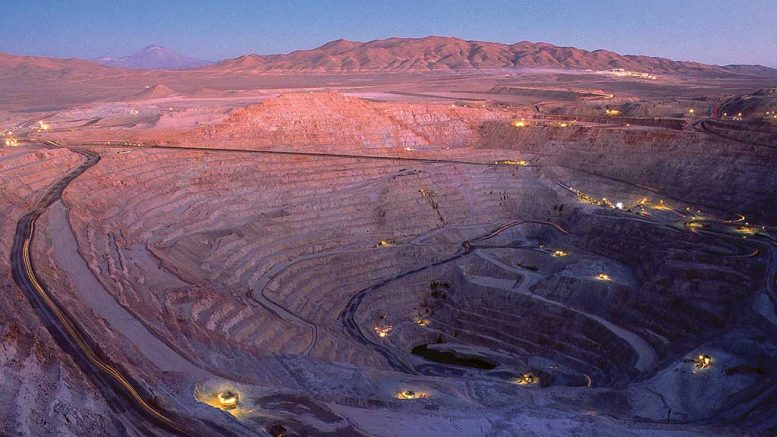World mine production has declined 3% in the first five months of 2017, with concentrate production declining 2.5% and solvent extraction-electrowinning (SX-EW) declining 4.5%.
The decline in world mine production owed to:
• A 10% (220,000 tonnes copper) decline in production in Chile, the world’s biggest copper-producing country, negatively affected by the strike at the Escondida mine and lower output from Codelco mines.
• A decline in Canada and Mongolia concentrate production of 20% and 21%, due to lower grades in planned mining sequencing.
• A 14% decline in Indonesian concentrate production, with output constrained by a temporary ban on concentrate exports that started in January and ended in April.
• An 11% decline in U.S. production, due to lower ore grades, lower mining rates and unfavourable weather conditions at the beginning of the year.
These reductions in output were partly offset by a 11% and 6% rise in Mexican (concentrate and SX-EW) and Peruvian (concentrate) output, with both countries benefitting from new and expanded capacity that was not yet fully available in the same period of last year.
On a regional basis, production rose 1% in Asia, 4% in Europe (including Russia) and 5% in Oceania, while declining 6% in the Americas and 4% in Africa.
World refined production stayed unchanged in the first five months of 2017, with primary production (electrolytic and electrowinning) declining 2% and secondary production (from scrap) increasing 12%:
• Increased availability of scrap lifted world secondary refined production, notably in China.
• The main contributor to growth in world-refined production was China (6.5% increase), followed by Mexico (11%), where expanded SX-EW capacity contributed to refined production growth.
• However, overall growth was partly offset by a 13.5% decline in Chile, the second-largest refined copper producer, where both primary electrolytic refined production and electrowinning production declined.
• Production also declined in the third and fourth world-leading refined copper producers, namely, Japan (in electrolytic production from concentrates) and in the United States (mainly in electrowinning output).
• On a regional basis, refined output increased in Asia (4.5%) and in Europe, including Russia (2.5%), while declining in the Americas (10.5%) and in Oceania (8%), and remaining unchanged in Africa.
World apparent refined usage declined 3% in the first five months of 2017:
• Preliminary data indicates that although world ex-China usage might have grown slightly by 0.5%, this growth was more than offset by a 5.5% decline in Chinese apparent demand.
• Chinese apparent demand (excluding changes in unreported stocks) declined 5.5%, because although refined copper production increased 6.5%, net imports of refined copper declined 30%.
• Among other major copper using countries, usage increased in India and Japan, but declined in the U.S. and Germany.
• On a regional basis, usage declined in all regions: in Africa by 3%, in Asia by 3% (when excluding China, Asia usage increased by 4.5%), in the Americas by 0.5% and in Europe by 5%.
World refined copper balance for the first five months of 2017 indicates a surplus of 15,000 tonnes (including revisions to data previously presented):
• This is mainly due to the decline in Chinese apparent demand (China represents 48% of the world copper-refined usage).
Copper prices and stocks:
• Based on the average of stock estimates provided by independent consultants, China’s bonded stocks increased 100,000 tonnes in the first five months of 2017 from the year-end 2016 level. Bonded stocks increased 140,000 tonnes in the same period of last year.
• As of the end of July, copper stocks held at the major metal exchanges (LME, COMEX, SHFE) totalled 630,262 tonnes, an increase of 91,189 tonnes (17%) from stocks held at the end of December 2016. Compared with December 2016 levels, stocks were down at the LME (-5%), and up at SHFE (22%) and COMEX (93%).
• The average LME cash price for July 2017 was US$5,978.60 per tonne, up from the June average of US$5,699.48 per tonne.
• The 2017 high and low copper prices through the end of July were US$6,347 (on July 31) and US$5,466 per tonne (on May 8), and the year average was US$5,781.72 per tonne (19% above 2016 annual average).


Be the first to comment on "Facts ‘n’ figures: ICSG says copper production declining"